Balance is a key skill that people use everyday when we walk, climb on a stepstool, climb up a set of steps, even sit at a table to eat. Adults and older children can execute all sorts of activities and movements that require good balance without thinking about it. But toddlers must develop this skill over time, and there are many ways parents can help their toddlers improve balance.
In this article, we will discuss the importance of helping your toddler improve balance, as well as some balance activities for toddlers that are easy to implement at home with little to no special equipment.
Balance Development in Toddlers
Balance for toddlers develops in stages, as specific milestones are met at different ages. In fact, balance begins to develop from the moment you place your infant on his stomach and he works on holding up his head.
From there, the developmental milestones of pushing up onto all fours and later crawling, sitting unassisted, pulling up to standing and standing independently, and then those precious first steps are all milestones on the way to developing good coordination for toddlers.
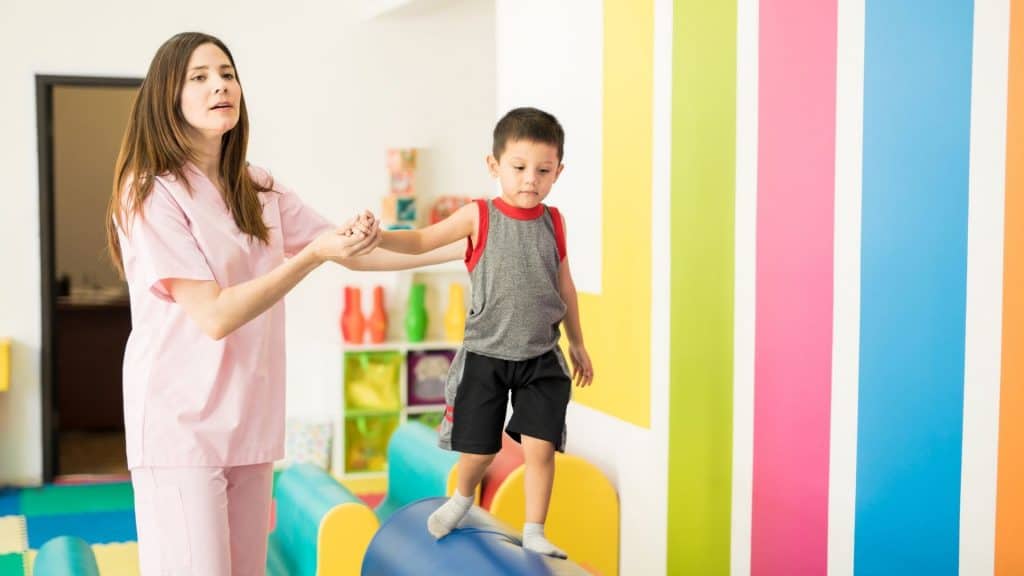
Here is a general breakdown of what balance milestones to look for as your child grows:
- Head control, appearing around 2 months of age
- Sitting independently, appearing around 6 months of age
- Pushing onto all fours and crawling, appearing between 7 and 10 months of age
- Standing, first with support and then independently, appearing between 9 and 16 months of age
- Walking, appearing between 9 and 17 months of age
- Running, appearing 21 to 30 months of age
- Hopping on one foot, appearing around 4 to 5 years of age
- Skipping, appearing between 5 to 6 years of age
These age ranges are approximations for when balance and coordination milestones appear. Some children will reach these balance milestones earlier and some later than these averages, and your child may show these skills at any time within these ranges.
If you have concerns about your child’s development, it is best to discuss them with his doctor.
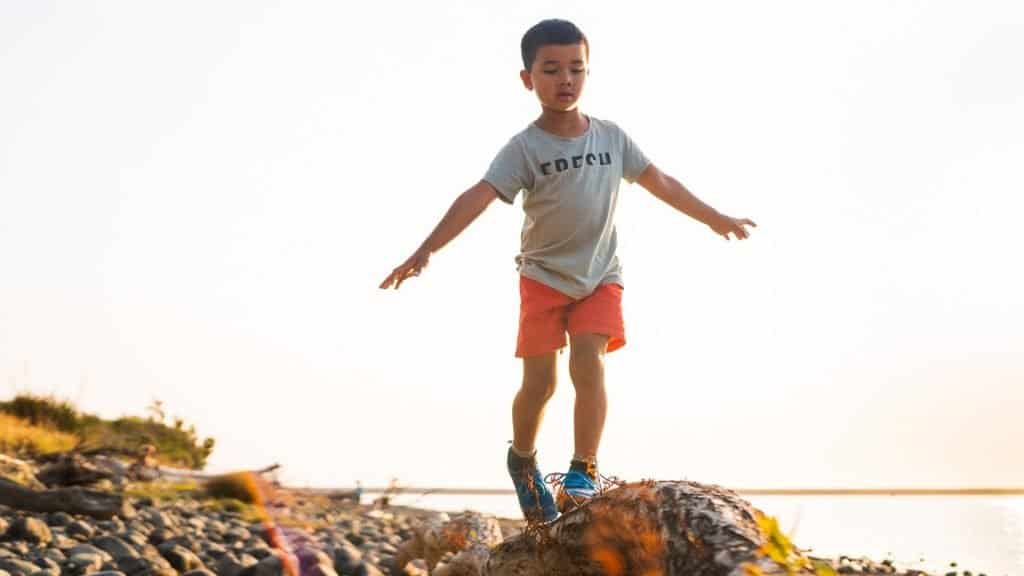
Why are balance and coordination important for toddlers?
It is important to provide plenty of opportunity for your toddler to work on coordination and balance as early as possible.
Good balance affects everything from the expected milestones, like walking, hopping, or climbing, to unexpected skills like eating and even handwriting.
When you work to improve balance in your toddler, you are building a set of skills that will help in multiple ways in everyday life. Good balance and coordination helps a child maintain control of body movements, as well as develop a sense of self-regulation that will help in social settings and the larger community.
In addition, working to develop balance coordination in toddlers lays a foundation for more complex physical activities, like those a child engages in while playing sports, and helps prevent injury as a child learns appropriate postural responses, like catching himself with his hands during a fall off his scooter.
Children who don’t develop balance and coordination skills early may end up avoiding physical activity, possess less awareness of and fluidity in body movement, or have trouble navigating environments like even ground or steps. Balance and coordination problems can also affect developmental milestones or the mastery of physical skills like swimming or climbing.
Children without properly developed balance and coordination can also have difficulty with balance-related self-care tasks, like getting dressed while standing. Fine motor development may also be delayed, such as pre-writing skills, pencil grasp and control, and hand dominance. In some instances, children with balance and coordination difficulties may also experience problems with spatial awareness, sensory processing, and even articulation of spoken language.
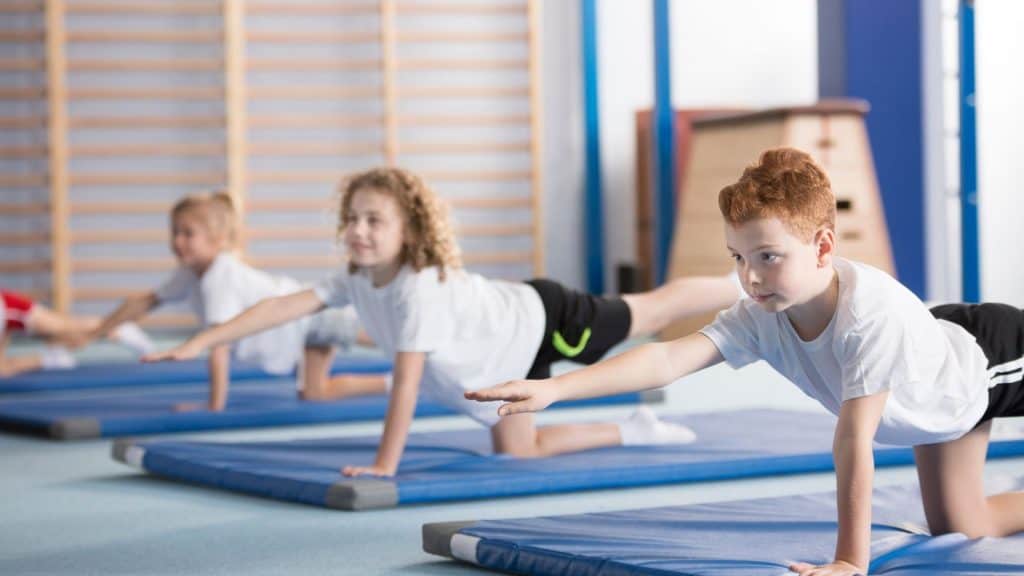
Important skills needed to develop balance and coordination in toddlers
When parents are aware of the importance of balance and coordination in everyday life, they can work on developing important skills that will lay the foundation to improve balance and coordination. These skills include:
- Attention and Concentration – The ability to maintain attention on a specific task for an extended period of time.
- Body Awareness – Knowing body parts and understanding how the body moves
- Hand-Eye Coordination – The ability to use information received from the eyes to control, guide, and direct the hands
- Muscular Strength – The ability of the muscles to exert force when met with resistance
- Postural Control – The ability to stabilize the trunk and neck during a controlled task
- Proprioception – The neurological information about bodily position and movement received from joints and muscles, which ultimately allows skills to become automatic
- Isolated movement – The ability to move one limb while keeping the rest of the body still
- Muscular Endurance – The ability for a single muscle or group of muscles to exert force during a sustained physical task
- Crossing the Mid-Line – The ability to cross an imaginary line running from the nose to the pelvis, which divides the body into left and right sides
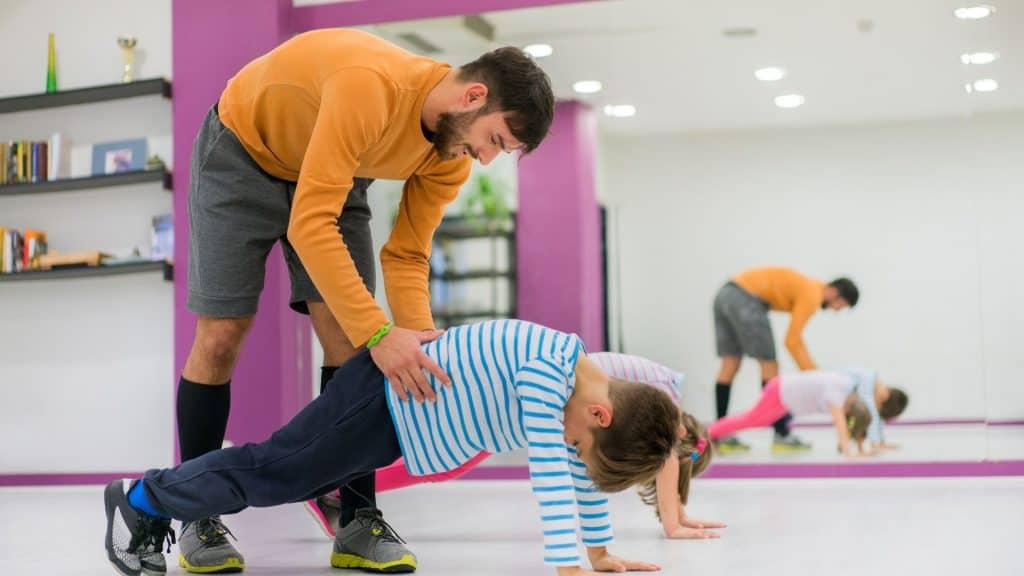
How can you improve balance and coordination in your toddler?
Parents can engage in many activities that will help improve balance and coordination, meeting the needs of children at all ages and stages of development.
You will want to choose activities that help develop attention and alertness through simple tasks that focus on only one movement at a time until your child is ready to integrate more than one at a time. Your child will need explicit teaching of many tasks, including how to properly align the body to maintain balance.
Activities that strengthen the core will lead to better stability, while tasks that work on muscular strength and endurance will help your child develop better muscle control of speed and direction alongside the ability to engage in a physical task for greater lengths of time.
Give your child opportunities to run, climb, and crawl, both at home as well as outside at a playground. Practice with kicking and throwing balls is important, and time to experiment with stacking toys, puzzles, sculpting clay, and coloring helps a toddler learn to use his hands for fine motor skills.
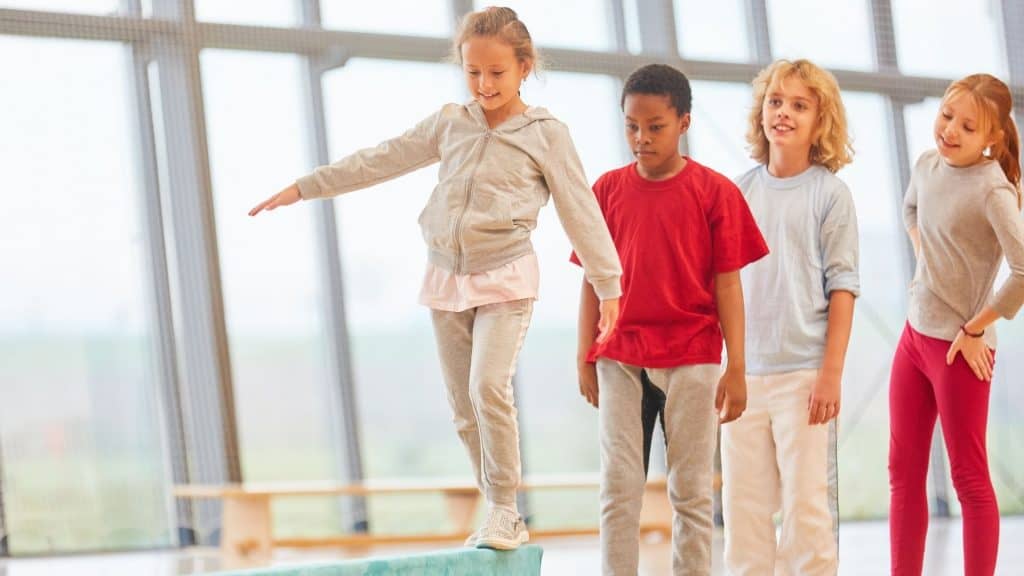
The best balance and coordination activities for toddlers
Here are some suggestions of the best activities for toddlers that will help work on balance and coordination.
- Balance Boards: Gentle Monster Wooden Wobble Balance Board, The Grade for Kids from FluidStance, or Spooner Boards Freestyle
- Hopping on one foot or toddler balance games like Hopscotch, which requires frequent and fast switching of movement patterns
- Walking on uneven surfaces, like pillows, bean bags, or even tree roots and rocks on a hiking trail
- Walking across the rungs of a ladder that is laid across the ground, like a ladder
- Wheelbarrows, in which the child walks on his hands while someone holds his legs off the ground
- Kid Yoga or Yoga for Toddlers: Cosmic Kids Yoga is a great video series, but there are many in-person classes and other online resources available
- Stepping stones, like these from Sunny & Fun, have kids practice jumping on one leg from section to section on the ground
- Walking on a low gymnastics balance beam or across a wooden 2×4 on the ground
- Freeze Dance, in which your child freezes in whatever pose he is in when you stop the music
- Draw a line with chalk, tape, or lay a rope across the floor and have your child walk along it
- Riding a balance bike, bicycle, or scooter
- Swimming helps a child focus on maintaining balance since much of his body weight is supported by water, and it helps build muscles, too!
Vikki is the creator of Totsgo and the mother of two children. She is a passionate mother who enjoys assisting other parents.
